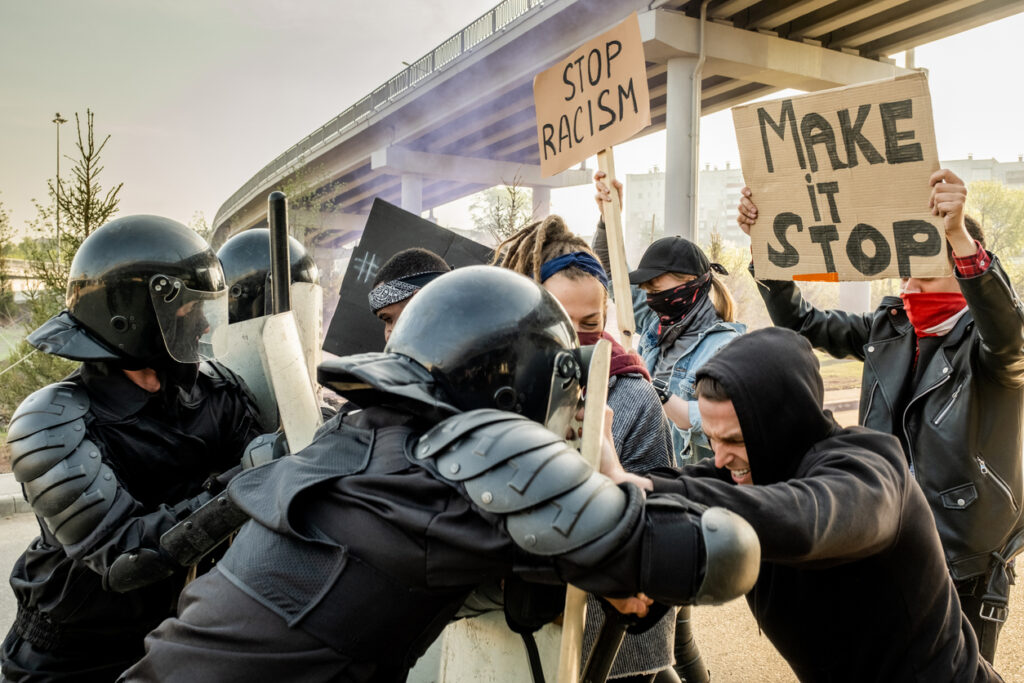For about two years – since the shooting of Michael Brown on August 9, 2014, in Ferguson, Missouri – police officers across the United States are having their actions, decisions, and behaviors more closely scrutinized than ever before. Most law enforcement officers conduct themselves professionally, but there’s no doubt that in most police agencies, the bad are mixed right in with the good. Police brutality and misconduct can result in personal injuries and even in wrongful death. Researchers at the University of Chicago are exploring some innovative ways to reduce the overall number of police brutality and police misconduct incidents.
The University is working with the Chicago Police to create a data program that will determine which police officers are most likely to conduct themselves aggressively, improperly, or illegally with a civilian. The researchers are also creating “predictive” data programs for police departments in Charlotte-Mecklenburg, Nashville, and Knoxville, as well as the Los Angeles County Sheriff’s Department.
Law enforcement agencies have always compiled statistics and have used them in attempts to discern crime trends and patterns. However, the application of contemporary “big data” processing employing algorithms – the kind that online marketers use to determine your preferences for targeted advertising – to root out unprofessional or incompetent police officers or officer candidates is new, according to the researchers.
HOW SHOULD “BIG DATA” ABOUT POLICE MISCONDUCT BE INTERPRETED?
The new approach is meeting with suspicion from many police officers at a time when their fairness and behavior is being challenged by politicians, the media, and protesters in the streets. The big question is obviously how to interpret the “big data” regarding individual police officers and what to do when the data predicts that an officer is likely to behave unprofessionally or illegally. Predicting police misconduct is one of the more contentious aspects of big data processing, but the University of Chicago researchers say their work has a number of other useful applications.
“The thing we’re finding is that using it (big data) to predict officer adverse incidents is just one use,” Rayid Ghani, director of the University’s Center for Data Science & Public Policy and formerly the chief data scientist for President Barack Obama’s 2012 campaign, told the Chicago Tribune. “Inside police departments, they are doing a lot of other things – performance management, other safety things, training. This is easily extensible to all those things.” Jens Ludwig, the director of the University of Chicago Crime Lab, told the Tribune, “Ultimately the goal here is that you want to train and retain the very highest-quality police force that you can.”
Most police departments use what they call a “threshold” system in their attempts to predict if a specific police officer is likely to be involved in a brutality or misconduct incident. Such a system “flags” police officers involved in too many questionable incidents like traffic collisions, high-speed chases, complaints from the public, or incidents resulting in injuries. Until now, the threshold system has been the only tool available to most police agencies, but it tends to put too many good officers in the at-risk group while overlooking others who genuinely belong there.
HAS BIG DATA BEEN TRIED IN THE PAST TO PREDICT POLICE MISCONDUCT?
Supporters say that data-driven analysis can point to patterns that lead to misconduct as well as those that lead to model job performance. The Chicago Police Department tried data analysis more than two decades ago using a software program called BrainMaker, but the effort was abandoned in less than two years. The Fraternal Order of Police argued that the program was unable to assess police work properly and often targeted officers who had not misbehaved.
In the Charlotte-Mecklenburg region, law enforcement administrators had to show the police officers that their personal information was made anonymous before turning it over to the University of Chicago research team, according to Captain Stella Patterson, who heads up the Charlotte-Mecklenburg Police Department’s professional standards unit. Still, many are concerned that an innocent officer could be unfairly stigmatized and professionally harmed.
Locke Bowman, a professor of clinical law at Northwestern University, told the Chicago Tribune, “There’s just kind of a discomfort for anybody who’s involved in criminal justice about singling out and punishing people without a basis of anything that they’ve done, but based on attributes that they have.” That discomfort, of course, is linked to the concern regarding what should happen when data suggests that an officer might be “heading” toward a brutality or misconduct incident. Determining the most effective way to intervene is the challenge. Is discipline the best approach? Counseling? Additional training?
WHAT IS THE MOST EFFECTIVE WAY TO STOP POLICE MISCONDUCT?
Supporters of the big data approach say that it requires the most extensive and reliable data possible. They tell us that the quality of data is improving and the ability to process that information is quickly becoming more sophisticated. University of Chicago researchers spent personal time with Charlotte-Mecklenburg police officers, joining in ride-alongs and seeking input from officers about what factors they believe may indicate that a colleague may have a negative incident on the job. Blending that personal understanding with higher quality data processing can make the newer system more nuanced and accurate, according to researchers.
Officers in the line of duty may use whatever force is genuinely necessary, but the law restricts what’s allowed. Officers must safeguard your legal and constitutional rights, even if you’ve committed a violent felony. If you’ve been a victim of police brutality or misconduct in northern California, seek out the counsel of an experienced San Francisco personal injury attorney who will listen to your story and thoroughly investigate it. If you’ve been injured – or if you’ve lost a loved one – in any incident of police brutality or violence, let a San Francisco personal injury attorney fight on your behalf for justice and for the full compensation you deserve.
The first tests of the new “big data” approach to monitoring police conduct – in Charlotte-Mecklenburg – have provided positive results. Compared against the Charlotte-Mecklenburg Police Department’s existing threshold-based system, the big data approach accurately flagged more officers who have been involved in negative incidents, “That was an indication that we’re going in the right direction,” Captain Patterson said, stressing that the new approach “is not punitive in any fashion. They’re early warnings that alert us.”









